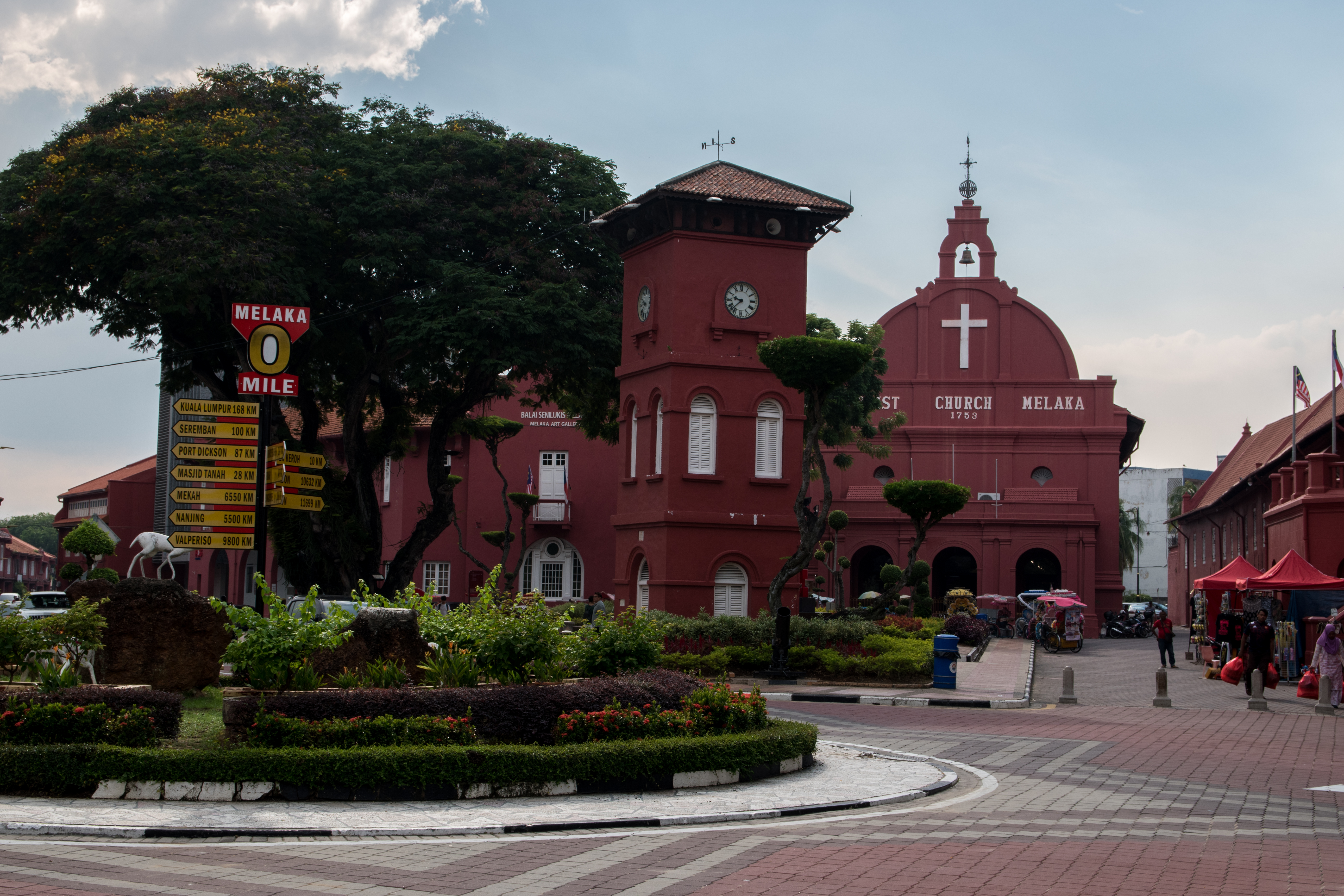Here we are… Already at the end of our trip in Malaysia. Our night bus drops us in Melaka historical city, symbol of the Portuguese, Dutch and then British colonial periods. Let’s go to discover this charming little town…
A mini Chinatown
You can not go wrong arriving in the city center. Once you have crossed the small bridge over the river, you find yourself on a roundabout with a big giant rooster in front of you and a street of chinese shops… I think it is here… #goodintuition
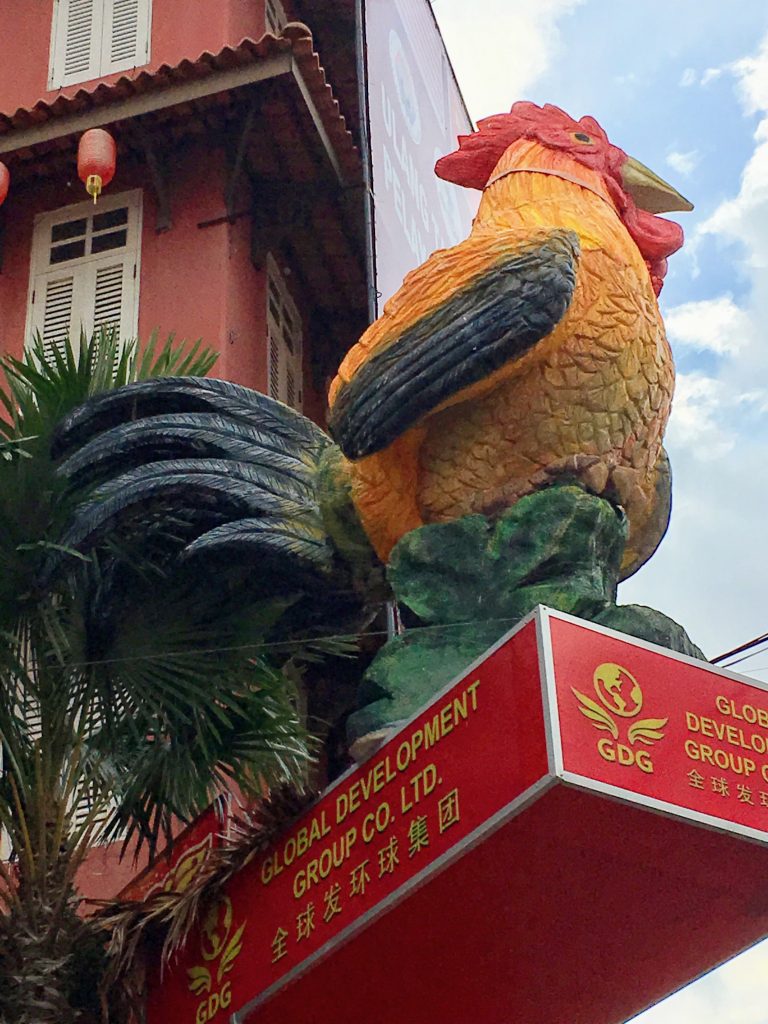
Chinatown gathers in a tiny perimeter (about one street) a whole bunch of small shops of Chinese food, but also of typical restaurants and temples. Why can you say you are in Chinatown?
- Firstly because there’s crowd of Chinese tourists who walk on the pathway in this street.
- Secondly, because you can fin, in this street only, the Durian pastries, made with the stinky fruit that Chinese love (see our article on Penang).
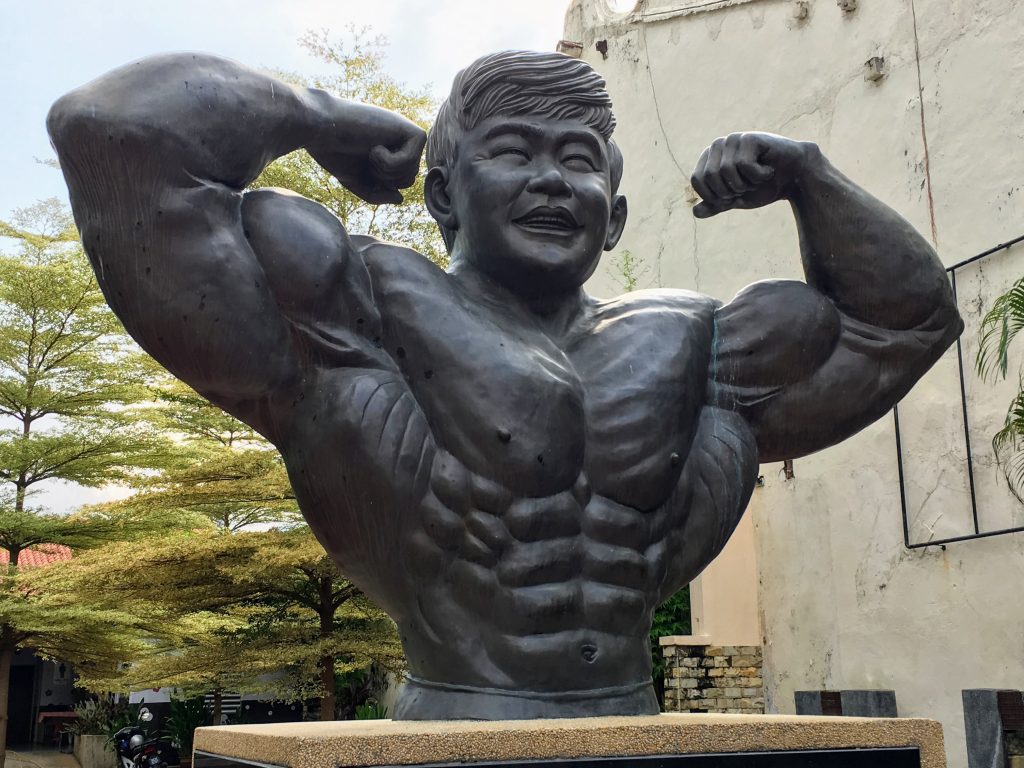
So we walk in the middle of the shops. We discover what is the ‘chicken bread’, literally a chicken crusted in bread and sold as a kind of big pie. It does not look bad and as Mister says, “it is surprising!”
For us, Chinatown is mainly about buying all kind of little souvenirs: magnets, clothes, etc. But out of this main street, we are surprised to discover one or two small temples, hidden between two buildings. It’s very nice! There are also many street arts hidden all around the neighborhood. The most visible one is probably next to the river.
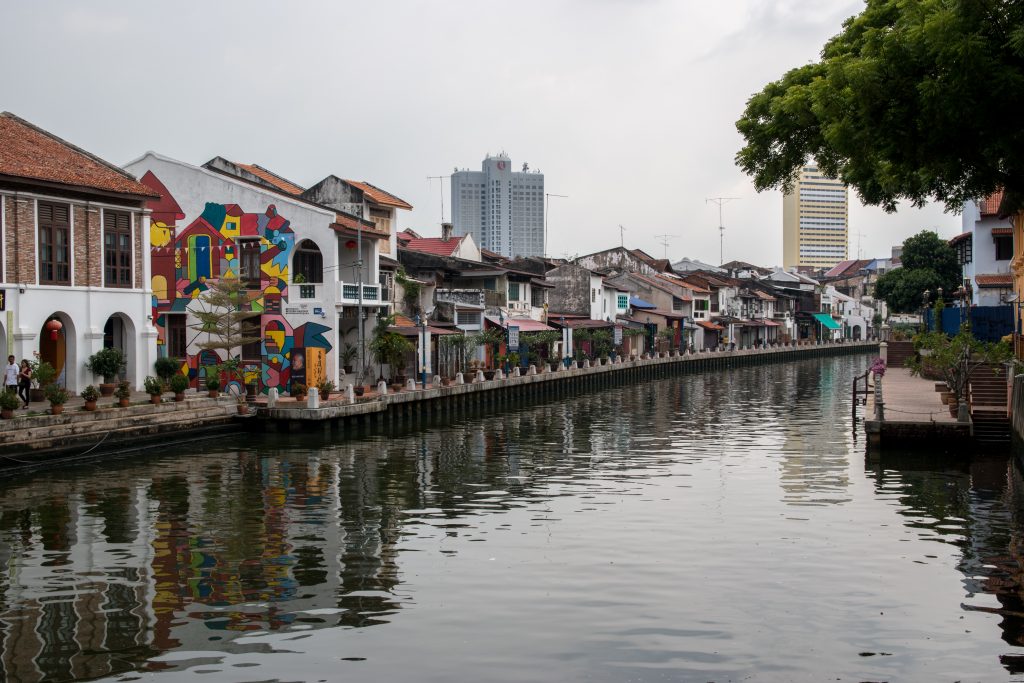
In the footsteps of colonization in Melaka
Yes, we can say that the Malaysia is a young country when you look a little at its history. First colonized by the Chinese, then the Portuguese, it was then conquered by the Dutch and finally given to the British. So we’re in agreement on the fact that the country has experienced multiple invaders.
Remember that Malaysia is independent since 1957 only. Melaka perfectly traces this period through these buildings.
Of course you will walk in the central square where stands the Portuguese Church of Christ, all in red. We also invite you to admire these magnificent techno tuk tuk Hello Kitty, Pokemon, Frozen, etc. The ride in these must be legendary!
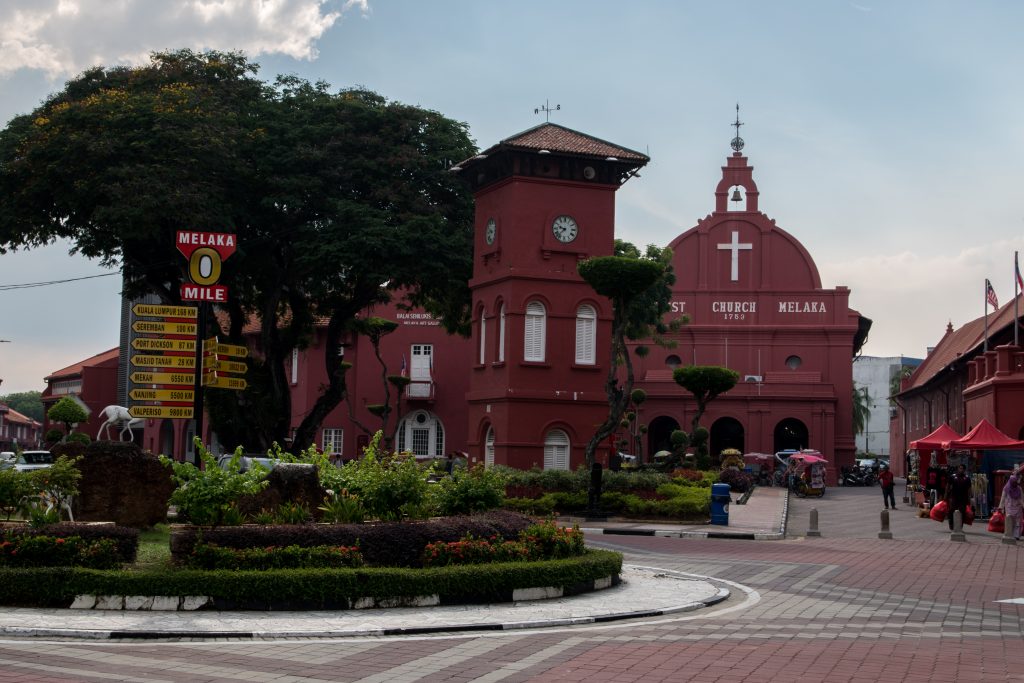
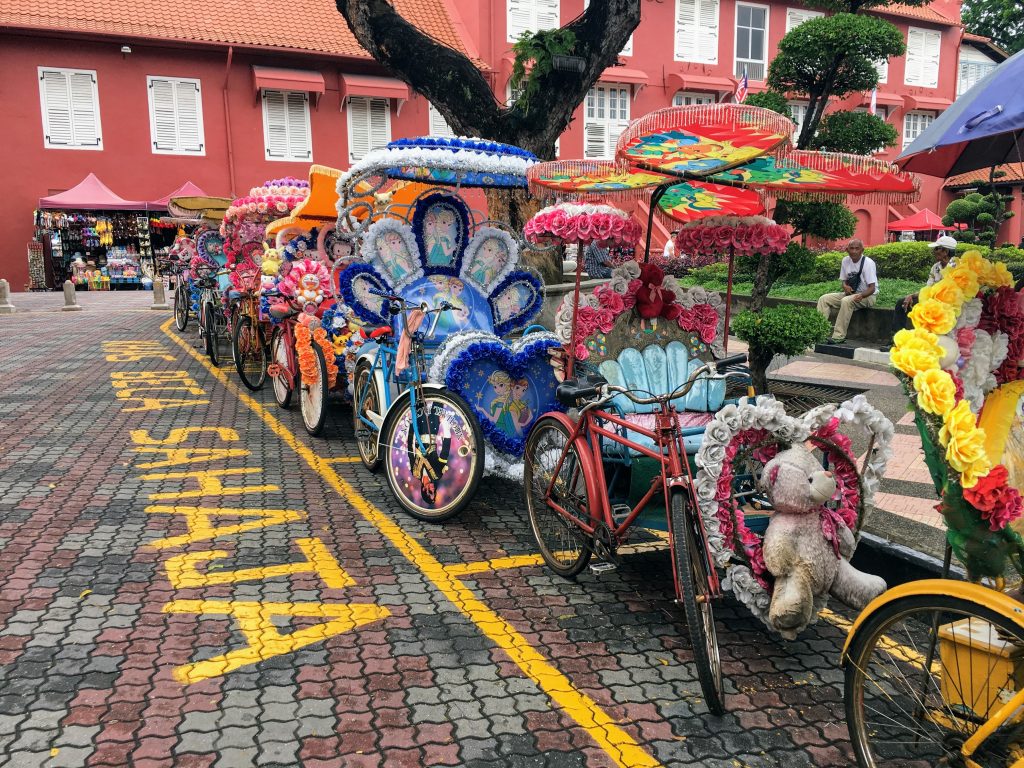
A little further, a replica of a Portuguese ship houses a museum that explains the rise of the city thanks to its international port during the Middle Age.
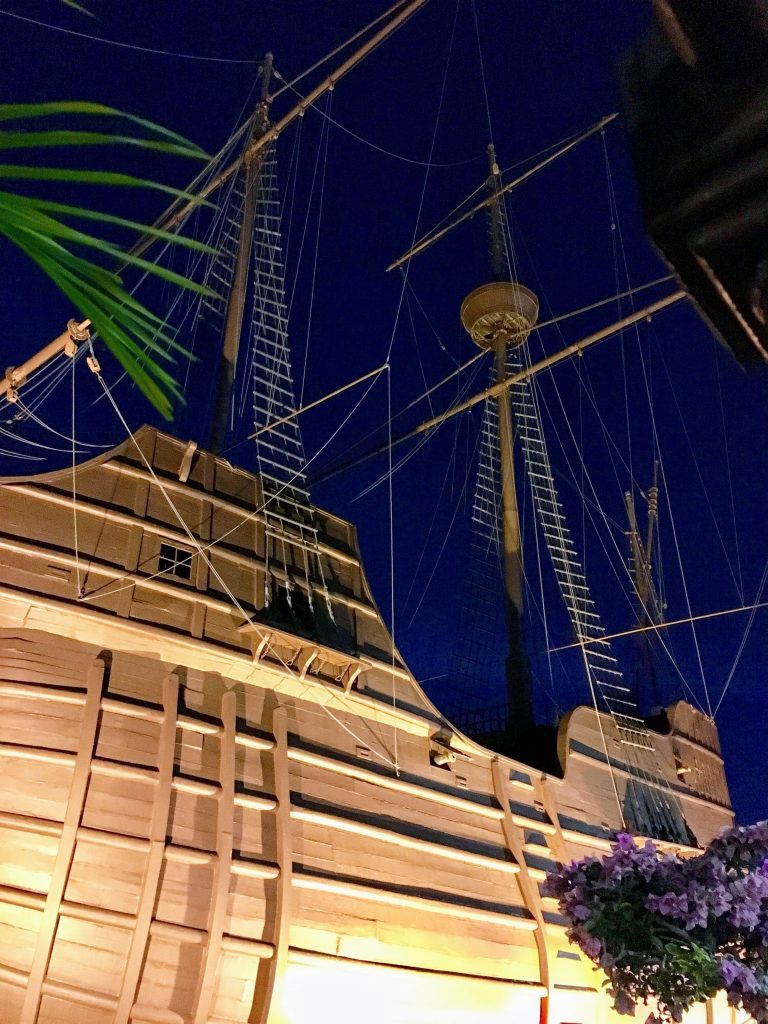
Then you climb the few steps to reach the top of the hill, and arrive at a church and a fort (or at least what is left) built by the Dutch. Finally, if we go down the other side of the hill, you find official buildings and British cemeteries, before arriving at the memorial of independence.
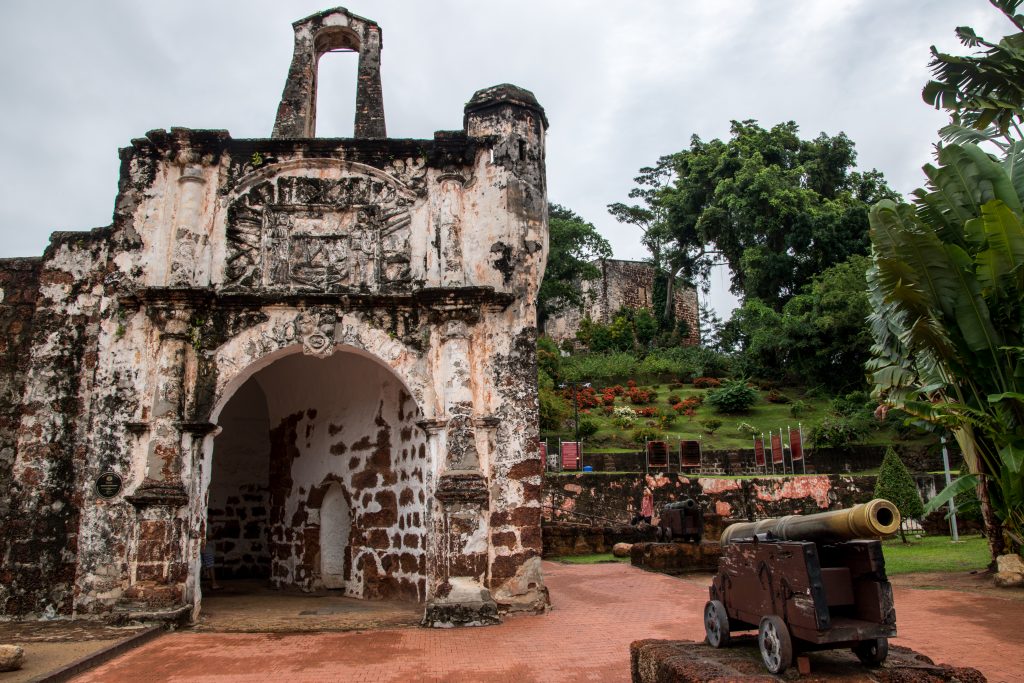
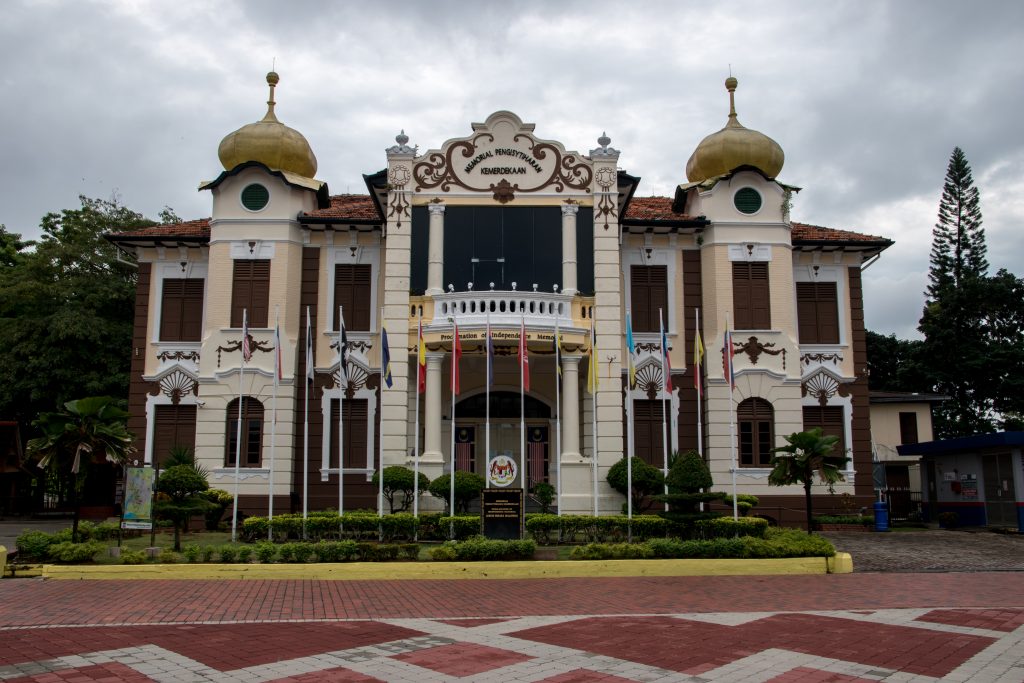
The decline of a city with a great future
Melaka has the chance to be at a maritime trading hub (at the time). It is an strategic way between China and the India and the Middle East.
Threatened by the Thais in the 14th century, the city is seeking the protection of China. In exchange, China migrate many Chinese in the District of Bukit Cina, which is today known as ‘Chinatown’.
In the 1500s the Portuguese take on the city and hope to prosper maritime trade which is in full expansion, thanks to the Muslim commercial network. But the Portuguese probably do not know how to handle it and are unable to impose their monopoly on trade in spices in Southeast Asia.
That’s when the Dutch of the Dutch East India Company arrive, in the middle of the 1600s, to take the town from the Portuguese. That results in completely dismantling the merchant network which was in place in Southeast Asia. Melaka is therefore no more a central and strategic location in all of this international trade.
With other interests in Southeast Asia, the Dutch abandoned little by little the town for the benefit of the Moluccas and of the island of Java in Indonesia. Although the Tin trade generates a few income, the city is declining.
Our english friends now come in (or rather enemies at the time). The Dutch se the French army getting a little too close. They go and knock to the English door, in order to get help to repel the invader (Yes, we almost ate french “baguettes” in Melaka…). In exchange, the English, very honest, require the transfer of the Dutch Territories, including Melaka in the early 1800s.
The English keep the control of the city and its region until 1946. Melaka has no more weight in international maritime trade as two other ports take thrive: Singapore and Penang. Once the English are gone, Malay Union is created, and gives birth, a little later, to Malaysia.
Today, Melaka is a world heritage city for the conservation of historic buildings, and lives mainly from tourism. Maritime activity has completely disappeared to start new tertiary activities. Today, the main invaders, except the varanus nebulosus (not very nice these beasts), remain cats, with or without a tail… 😉
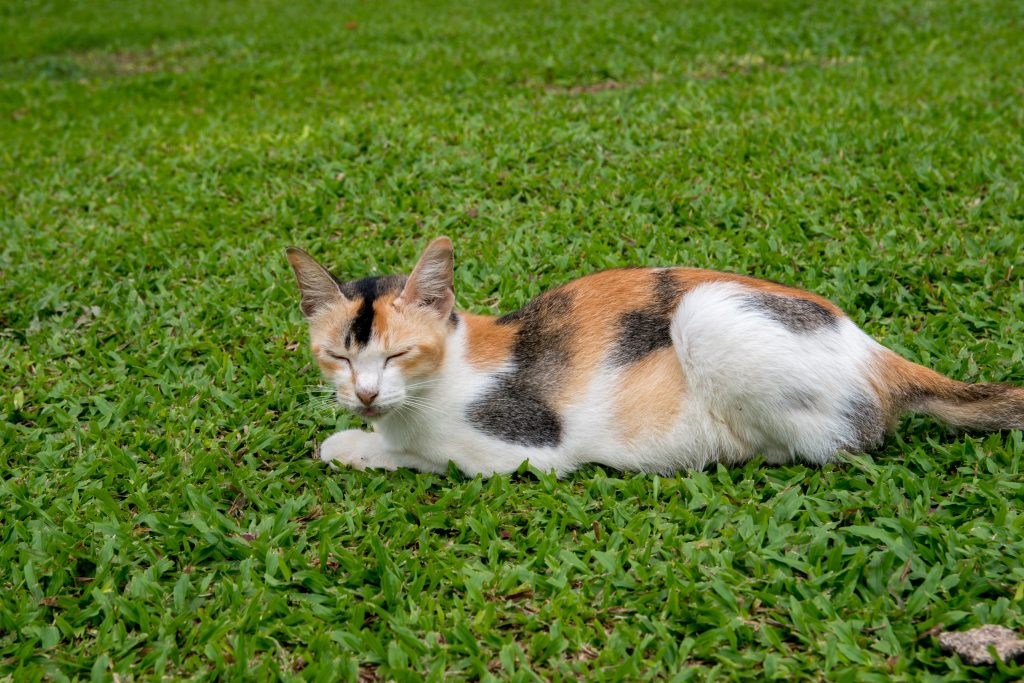
After a few days in this small city, we want to enjoy a last Malaysian Island: the Tioman island. Unfortunately for us, the month of ramadan is coming to its end, which means 3 days off throughout the country. We are unable to find a bus + boat to go and come back from the island. So, we skip this last part to go directly to Singapore. Dramatic change of landscape and atmosphere for the next article!
